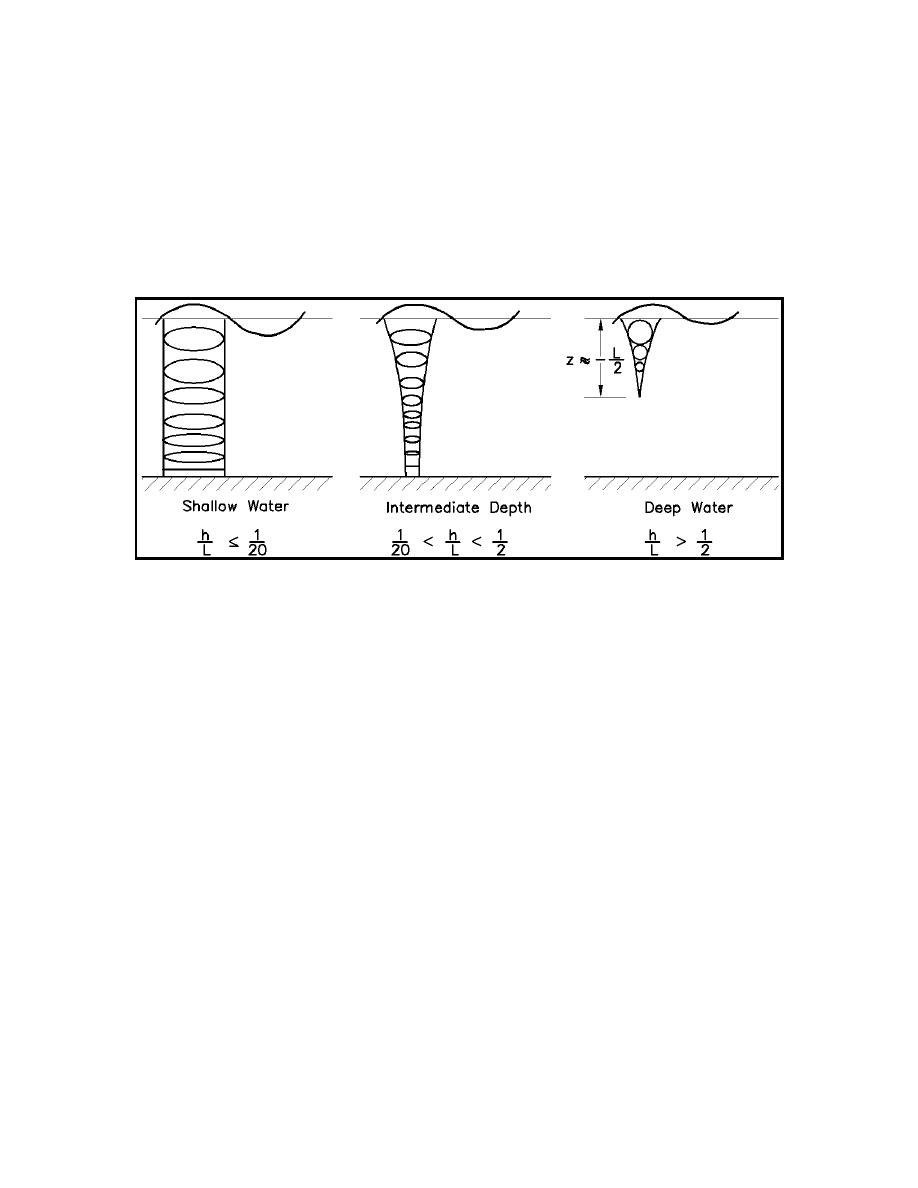
EM 1110-2-1100 (Part II)
30 Apr 02
(9) Additionally, one important difference between long waves and short waves can be seen in the
computed orbital velocities. Figure II-5-3 shows water particle trajectories for long, short, and intermediate
waves as a function of depth. As can be seen, and computed from Equations II-5-3 and II-5-4, the horizontal
velocity of a long wave is maintained throughout the water column, from the surface to the bottom. In the
case of short waves, the strength of the horizontal and vertical component decreases with depth to the point
that waves do not induce bottom currents. The fact that long waves affect the bottom is important in that
bottom sediments can be eroded and transported by tidal and other long-wave currents. For example, tidal
flood and ebb currents contribute to the transport of sediments to form ebb and flood shoals. Potential erosion
and deposition considerations will be discussed in Part 3 of this manual.
Figure II-5-3.
Schematic of water particle trajectories (Ippen 1966)
b. Discussion. Short waves impact nearshore water surface elevations by creating the wave setup
condition. Details of wave setup and associated setdown are described in Part II-4. Including setup can be
critical in developing water surface design criteria, as setup can create an elevated surface on which tide and
storm surge propagate. Because the interactions of these components of the water surface are not linear, and
because they are of different time scales (Part II-1), they are generally considered separately in the
development of total water level design criteria. Methods for computing and combining these effects are
given in Part II-3 and 4. The following sections concentrate on tidal and storm surge elevations.
II-5-3. Astronomical Tides
a. Description of tides.
(1) Introduction.
(a) Astronomical tides are observable as the periodic rising and falling of the surface of major water
bodies on the earth. Tides are produced in response to the gravitational attraction of the moon, sun, and (to
a considerably smaller extent) all other celestial bodies. Because of its relative closeness to the earth, the
moon induces the strongest effect on the tides. Tidal currents are produced in response to differences in the
water surface elevation.
(b) Tidal height, or the vertical distance between the maximum and successive minimum water surface
elevation, is a function of the relative position of the moon and sun with respect to the earth, and varies from
location to location. Typically, the dominant tidal cycle is related to the passage of the moon over a fixed
meridian. This occurs an average of 50 min later each succeeding day. This passage of the moon produces
Water Levels and Long Waves
II-5-5


 Previous Page
Previous Page
